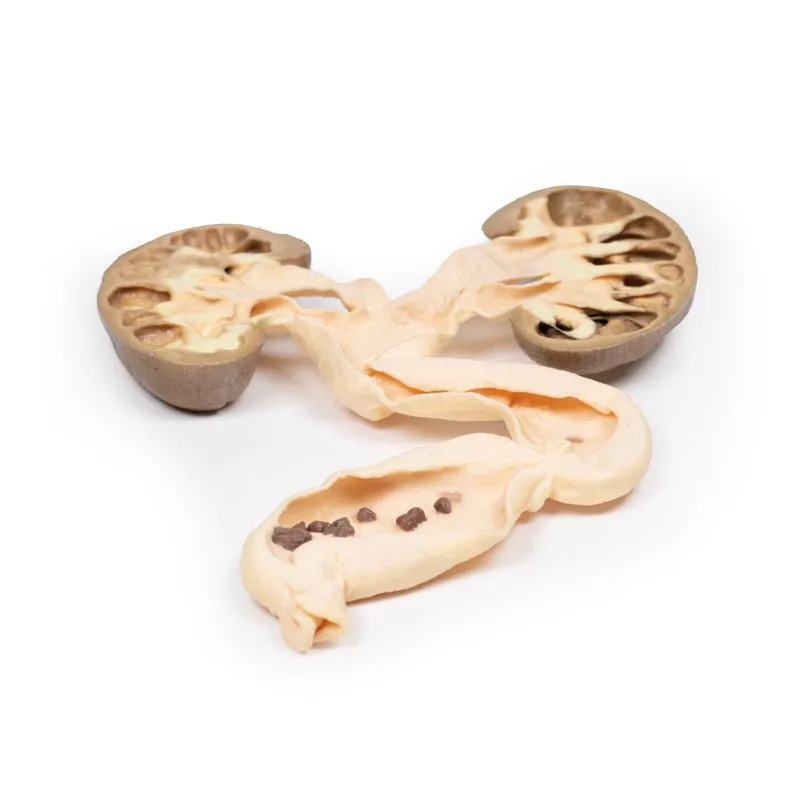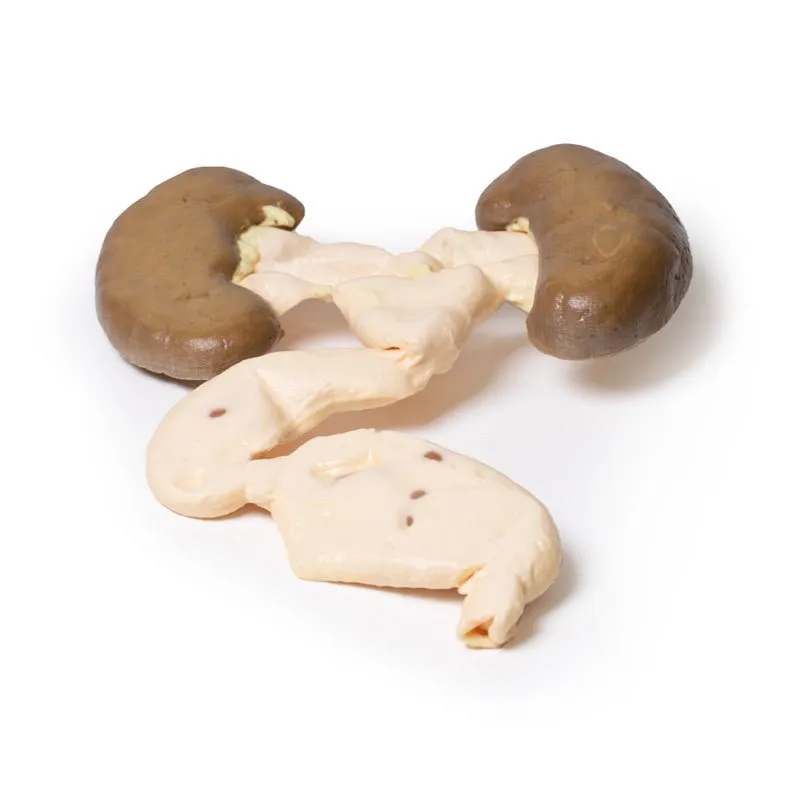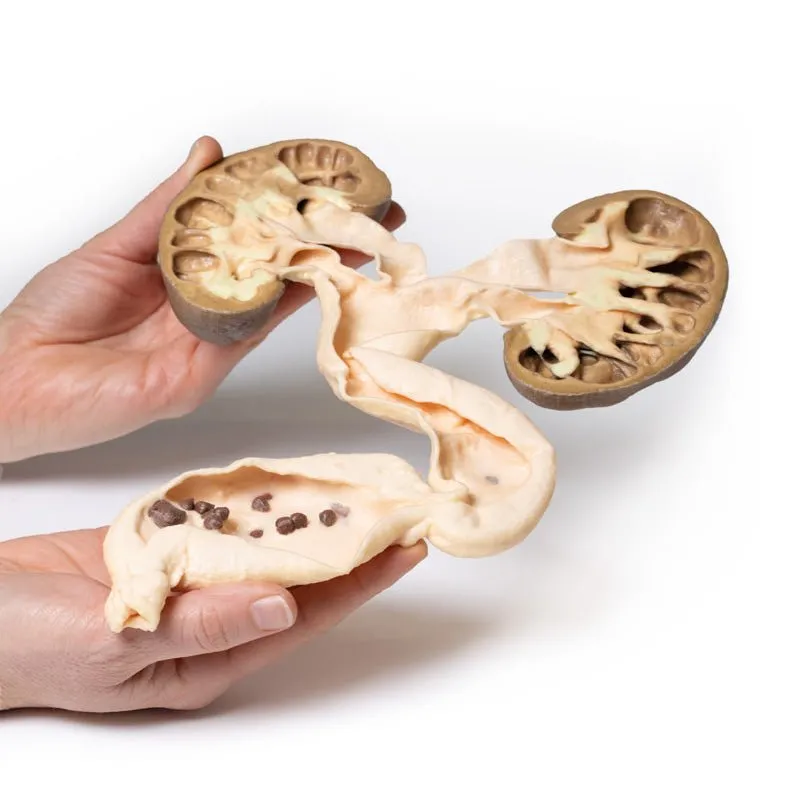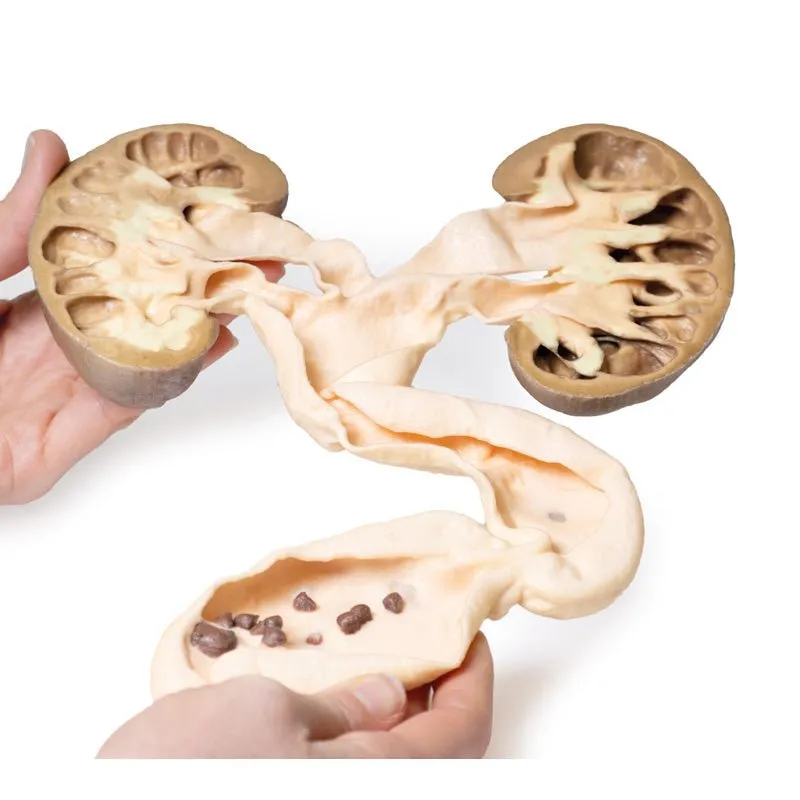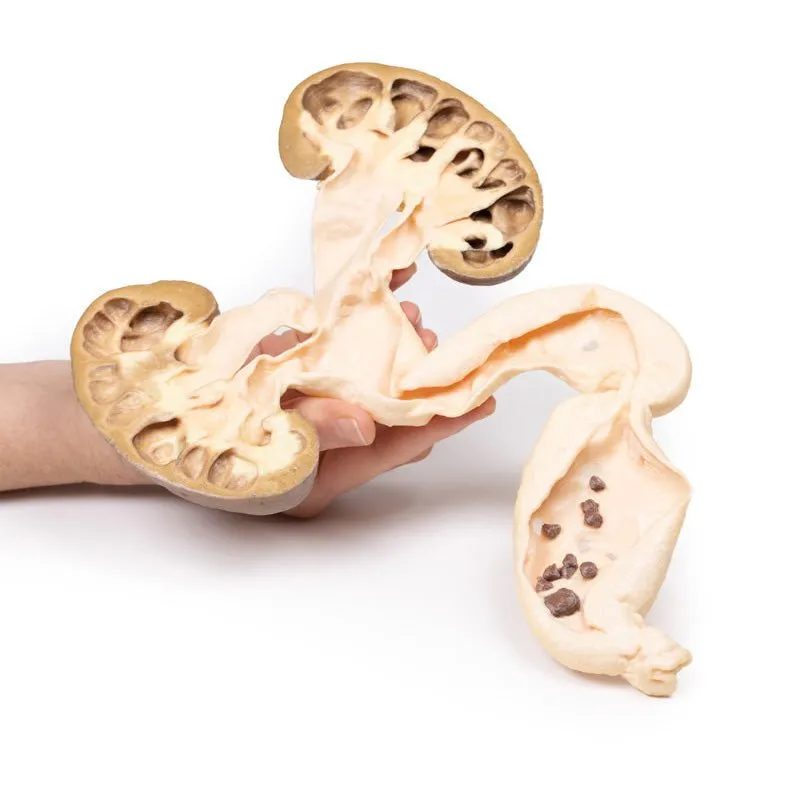3D Printed Hydronephrosis Hydroureter
Clinical History
A 49-year old male presents with a 6-week history of malaise, urinary frequency
and haematuria for 6 weeks. Further questioning revealed intermittent left flank pain. Abdominal ultrasound showed
severe hydronephrosis and hydroureter, secondary to multiple obstructing ureteric calculi at the uretero-vesical
junction. He underwent a left nephrectomy and ureterectomy, and made a successful recovery.
Pathology
This is the patient’s left nephrectomy and ureterectomy specimen. The kidney has been
bisected and the cut surface of both halves is displayed, mounted in continuity with the ureter, which has been
opened. The kidney is grossly hydronephrotic, and there is considerable atrophic thinning and loss of renal
parenchymal tissue. The ureter is extremely dilated and distally contains a number of small brown-black calculi with
irregular sharp surface projections. These are calcium oxalate stones.
This is an example of hydronephrosis and
hydroureter due to calculi obstructing the lower end of the ureter.
Further Information
Hydronephrosis, or obstructive uropathy, is the dilation of the renal pelvis
and calyces caused by an obstruction in the urine outflow. Obstruction can occur at any point in the urinary tract.
Any lesion-, intrinsic (within the outflow system) or extrinsic (outwith the ureter)-, that impedes the flow of
urine can lead to hydronephrosis. Common causes include: congenital anomalies, urinary calculi, urinary tract
tumours, urinary tract inflammation, prostatic hypertrophy, and prostate tumours. Symptoms of the hydronephrosis
relate to the pathology causing the obstruction (e.g. renal colic pain with calculi), the time period of the
obstruction (acute or chronic), the site (unilateral or bilateral) and whether it is complete or partial.
If the
obstruction is not relieved it will ultimately cause pressure to build up proximal to the obstruction. This pressure
is transmitted in a retrograde manner through the collecting ducts to the cortex causing progressive atrophy of the
kidney with dilatation of the renal calyces and pelvis. The pressure also compresses the vasculature in the medulla
leading to ischaemic medullary damage. Glomerular filtration persists in the affected kidney until late in the
disease process when the filtration gradually diminishes or ceases. Obstruction triggers an interstitial
inflammatory process leading to fibrosis. Ultrasound is the key diagnostic tool for diagnosis followed by CT or
urogram. Most obstructing lesions require surgical intervention to relieve the blockage. Surgical interventions
depend on each individual cause, but include nephrostomy or stenting for upper urinary tract obstruction and urinary
catheter or suprapubic catheter insertions for lower urinary tract obstructions.
GTSimulators by Global Technologies
Erler Zimmer Authorized Dealer

 Cart(
Cart(